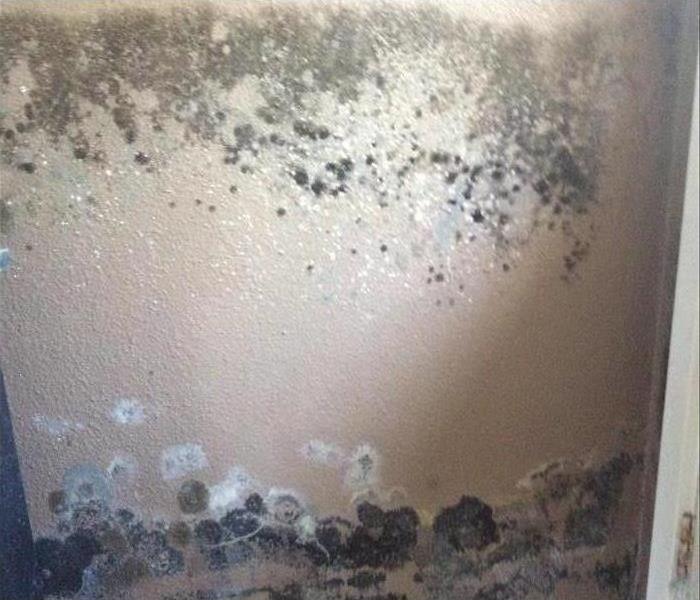Understanding How Mold Spreads in a House
12/29/2022 (Permalink)
How Mold Spreads in a House
Mold is a common household problem. Each year, 9 million homes across the U.S. have water damage that causes mold growth. Mold can enter your house through cracks in the foundation or walls, gaps around pipes and wires, or even tiny openings in windows and doors that weren’t properly sealed during construction. Once it’s inside your home, mold spores can spread quickly throughout the building because they get everywhere.
How Mold Spreads
Mold spreads through spores. Spores are tiny pieces of mold that are released into the air or on surfaces in your Whitehouse, TX home, and they can travel quite a distance before they land. Spores are invisible to the naked eye so you may not know that they're floating around your house until they've already begun to grow into new molds.
Active vs. Inactive Mold
Active mold is known as a "hyphal" form of the fungus. This is what you see growing on your moldy bread, or in the corner of your shower stall. In fact, if you open your bathroom cabinet and see what looks like white cotton balls growing on some old papers inside—it's more than likely that you have active mold in there.
If left alone, this type of fungal growth will continue to spread across surfaces until it reaches every nook and cranny of your home (which means it can grow behind walls too). If any part of its "root system" gets exposed to moisture or warm temperatures (like those found near furnaces), it's likely that other sections will begin growing again as well!
Inactive mold doesn't look quite as gross when compared with active mold; however it can still cause health problems if ingested by humans or pets who may come into contact with contaminated surfaces/dust particles floating around them (such as cats licking themselves after rolling around on bedsheets covered with spores). This type usually occurs during rainy seasons because rainwater contains nutrients needed for survival amongst different types of organisms such as fungi species.
Mold Spreads Quickly
Mold spreads throughout a house quickly. It can travel through the air, water, or people's clothing. Mold spores are microscopic and can float in the air for several days before landing on an object to begin growing. They also float around in water and attach themselves onto wet surfaces like walls and floors - even if those surfaces aren't visibly damp anymore!
Preventing Mold Growth
In order to prevent mold growth, you should keep your home clean. Mold spreads quickly in a dirty environment. It also thrives in places with high humidity and moisture content. You should make sure that there is enough ventilation in your house so that the air can dry out properly, preventing mold from growing on surfaces such as carpets or furniture.
Mold spores are everywhere but only grow into colonies if their conditions are right. Keep pets out of affected areas until they have been cleaned up; they will often track spores throughout the house on their paws or fur!
If water damage occurs (such as leaks from roof top downpipes), clean it up immediately before it has time to seep into wall cavities where it won't be noticed until later when there's already too much damage done by then.



 24/7 Emergency Service
24/7 Emergency Service
